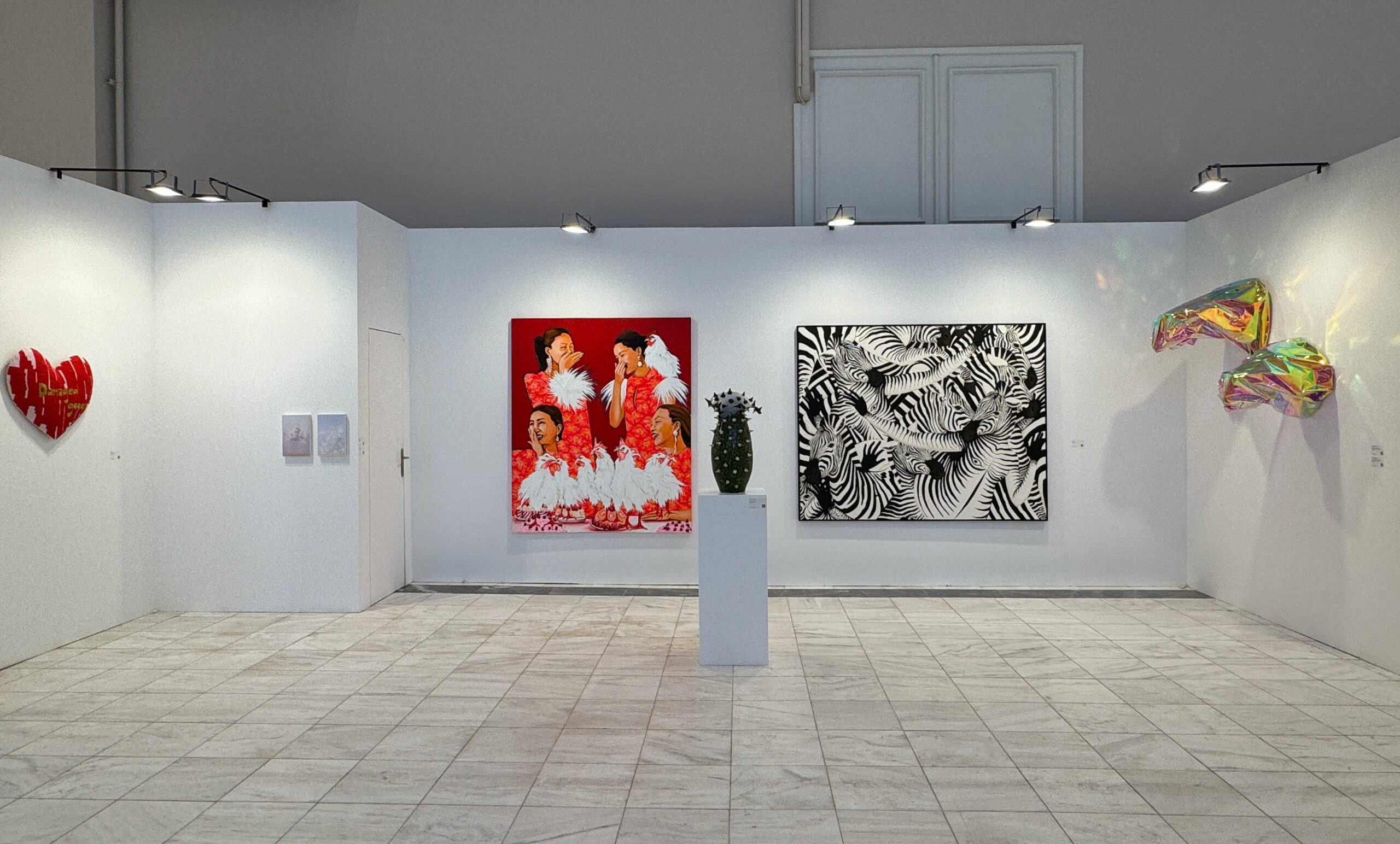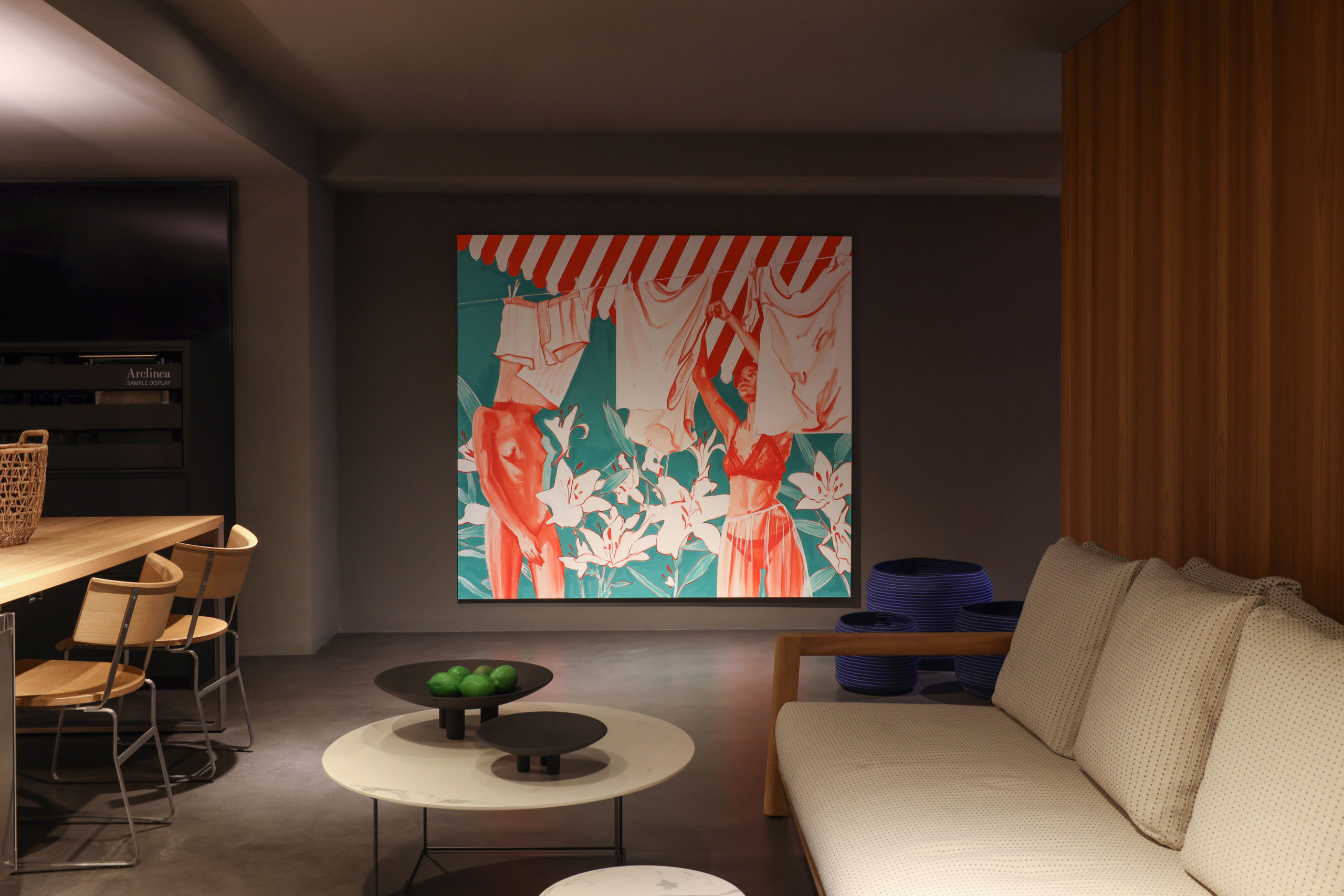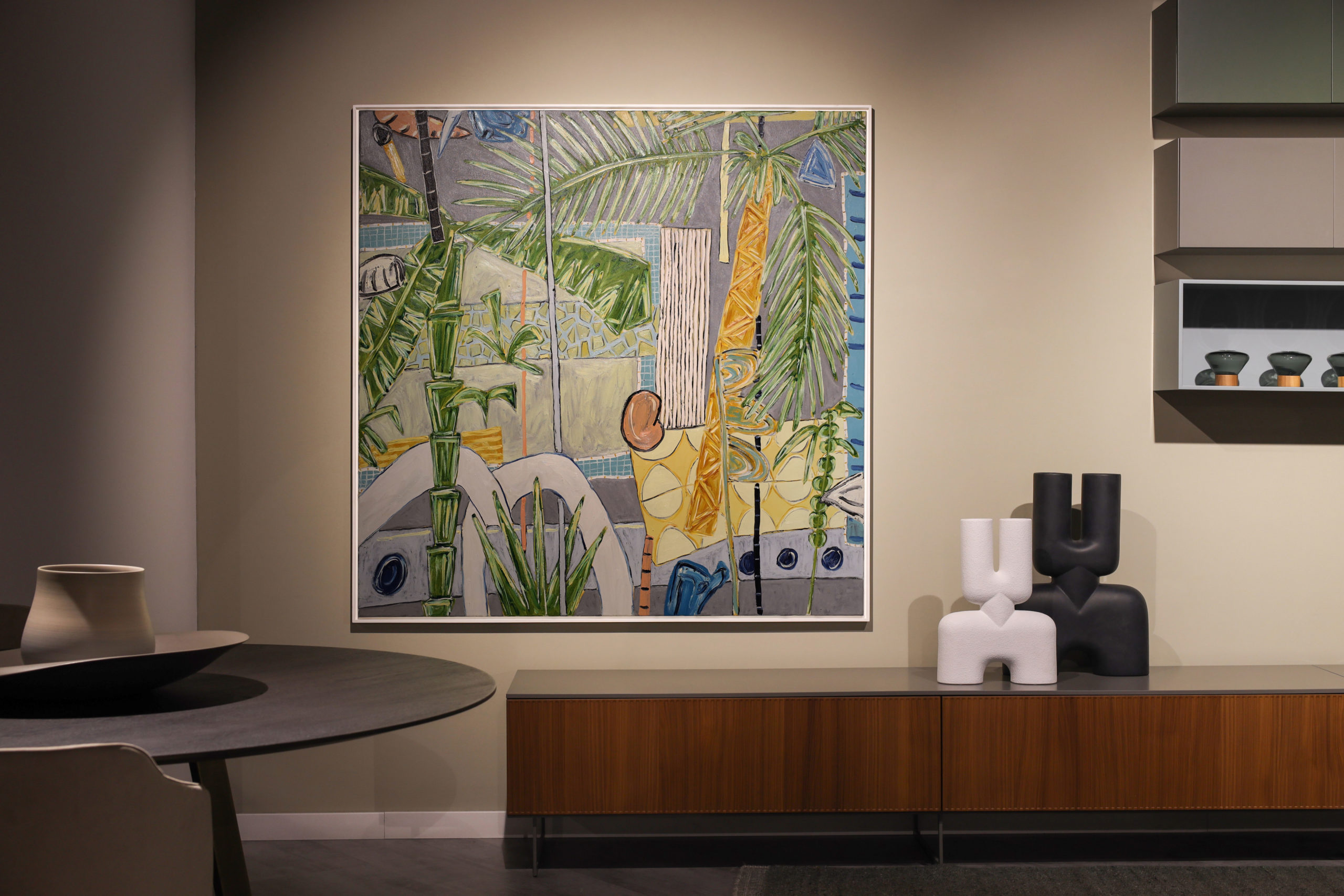Interview
#spotlight on
Alec Cumming
Interview
#spotlight on
Alec Cumming
Alec Cumming’s diverse and energetic painting practice appears to steer clear of any simplistic interpretation or characterization. Indeed, his work features complicatedly structured compositions that meticulously mix abstract elements with distinguishable figurative elements. This stylistic multiplicity is born out of Cumming’s intrepid endeavors, his very own adventures. Having spent several years working in India as well as traveling the globe, Cumming draws inspiration from his experiences and the meticulous observation of the world around him which he then translates into a visual dialogue through his art.
The exhibition ‘Perfect Adventures’, introduces a new body of Alec Cumming’s vibrant works, where he continues to explore the idea of the fleeting nature of moments. Deftly combining representation and abstraction, the artist focuses on his recent adventures and on materials gathered while in India, Spain, California and Cyprus. The broad visual stimulus discovered in his escapades is translated into a ‘pan global’ vocabulary of symbols and shapes.
Upon the occasion of the artist’s exhibition ‘Perfect Adventures’, Elena Ioannidou, the gallery curator, and Alec Cumming shared an intimate conversation, shedding light on Cumming’s artistic influences, inspiration and ultimately, narrative.
In your exhibition ‘Perfect Adventures you continue to explore ‘the idea of moments’. What does this mean, how did you first get interested in this and what gives you inspiration to continue?
The concept of the fluidity of moments comes from a continued interest to explore a sense of capturing the fleeting glance. In this moment your focusing on a single point of reference that is satisfying, either consciously or sub consciously. This could be a glance across a pool in Sri Lanka, a table laden with drinks, sun-soaked awnings that shade a market street, an evening terrace party or basking on the veranda. I first became interested in this theme of capturing moments, when living in India. I was entranced by the delicate stories and narratives within Indian miniature painting and how much this contrasted with residing in the busy and bustling city of Delhi. I began noticing things as if I was capturing compositions with my eyes. Everywhere I looked there would be something new. This led me to want to employ elements of time within my paintings it became not about painting or a representation of something but more a sensory reaction. As I keep travelling my ‘pan-global’ visual language develops and adapts to my surroundings, influencing the images and shapes created on the canvas.
How do you choose the places you visit?
With the progression of time and reflecting on my own work, I realize how much I have become aware of what interests me, one of these influences is definitely the light of a place which has been hugely influential. There is a certain type of light found in such areas of the world that have a tropical climate, places such as India, Cyprus, Sri Lanka and California all have this light. This is a light that is bright and crisp, a light that almost resonates like a vibration. I feel as though light is at the core of my work.
In your work you mix abstract and figurative elements. Two completely opposite styles. Does it come naturally or is it on purpose?
This has developed over time. If you look back over my work from the last ten years it has a root in more abstract nature, over time I have come to terms with a sense of narrative. This narrative naturally leaded to me creating work with more semi-recognizable forms, such as pots, palm trees, plants, pools and figurative body parts. These are the things I want to give a sense of the form, not necessarily the form being present within the canvas but more a remembrance or fleeting second. A moment to allow the viewer to put themselves within the painting to become the figurative subject matter, to wander and explore it.
What is the process you follow to create an artwork?
Part of the beginning of my practice is to gather source material. This could be through drawing, photographs or note taking. I don’t use this to make paintings from, but they are used as visual guide. The creation of the work becomes a physical process of working things out. I need to be able to control the conversation with the painting, when to run away with an idea or when to hold back. There is a sense of freedom within this. These paintings create moments of clarity that can absorb you. It is a playful process from start to finish. I don’t set out with an idea. It can be instantaneous or prolonged. I have learned to catch that moment of completion over time, when all the components come into focus for a single split second.
Why art?
I have been making and exhibiting my work for over 10 years. I find as I grow older, see more and experience more, I realize that my artistic language can go on forever and keep adapting. This is more than just art on a piece of canvas or paper, its even how I talk, how I make expressions and have discussions with myself and the audience, a way to communicate my own experience.
Subscribe to our mailing list to receive news for upcoming shows, valuable insights and useful tips on collecting art
We will process the personal data you have supplied in accordance with our privacy policy.





